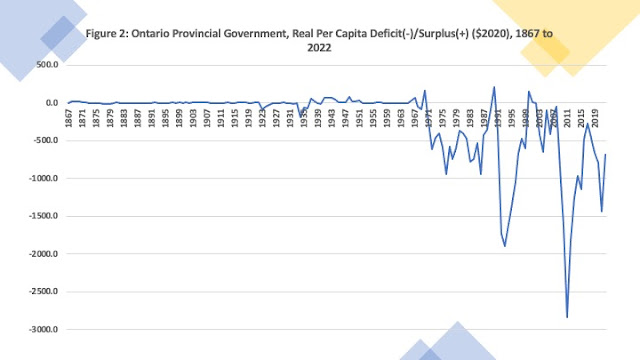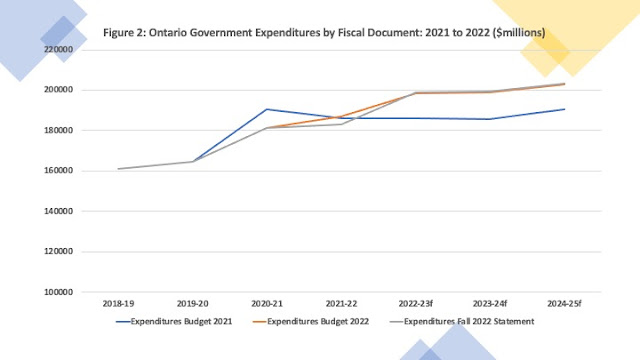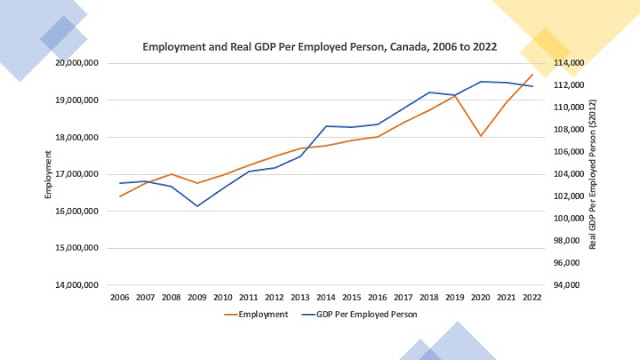Ontario has made a number of
announcements regarding its post-secondary education sector. First, it extended its tuition freeze for
a third year. As you might recall,
going into the pandemic, Ontario reduced domestic student tuition fees by ten
percent and since then has held them frozen meaning that after three years of
time and inflation, in real terms tuition has been reduced by at least twenty
percent. Though not emphasized this week,
Ontario’s government grants to its universities also remain largely
frozen. As a result, with flat domestic
enrollment and frozen funding, at the margin, Ontario university revenues have
only been growing because they have been
recruiting international students making them increasingly reliant on what
could be a volatile source of revenue.
However, the provincial
government is concerned enough about the future sustainability of its universities
that it has also announced a Blue
Ribbon Panel to “provide advice and recommendations to the Minister of
Colleges and Universities to help keep the post-secondary education sector
financially strong and focused on providing the best student experience
possible. ” A blue ribbon
panel or committee is generally a group of “exceptional” and “accomplished”
people who are brought together to study a particularly vexing problem and bring
their expertise to bear on providing solutions.
It is several notches below a Royal Commission but designed to bring a semblance
of non-partisan expert advice to a problem. This panel is expected to report back in summer of 2023.
Now it has already been
remarked that there are no faculty representatives
on this Blue Ribbon Panel. However, it
would be churlish to say the least to infer that the provincial government in
any way thinks that university or college faculty are neither exceptional or
accomplished. In trying to choose
faculty representatives for such a committee, one opens a can of worms larger
than the universe. If the provincial
government had selected someone from the humanities, professional schools and
sciences would have complained they were being neglected. If a scientist, the humanities would have been outraged. If they chose a faculty member from a large
university, the small universities would have complained. If they had picked an economist, there would
have been a chorus of criticism charging that the outcome was predetermined by selecting
a minion of the capitalist neoconservative hegemony. You get the picture.
So in the end, the government
chose a panel from people that it sees as leaders without a direct current
stake in universities to study the problem.
There are no faculty nor do there appear to be any currently serving university
administrators on the panel either, though they all have links to post-secondary
education in one form or another as well as board and community experience. There
is a member with student experience. And
there is past faculty and administrative experience in the case of Bonnie
Patterson and Alan Harrison – who incidentally is also an economist who was at
McMaster teaching at the time I was there in the 1980s. There does seem to be an emphasis on CEO
types with some financial experience and also strong representation from the new age
of e-learning and other types of perceived innovative practices in education
with CEOs from E-Campus Ontario and Contact North.
So, what will the panel
decide? Well, that is to be decided obviously though I suspect e-learning and
micro-credentials is one direction they are likely to emphasize. That will not
please some universities who are trying to bring everyone back to the before
times with full in person learning and on campus presences including night
classes. However, this is motivated as
much for pedagogical reasons as it is for financial ones rooted in the need to
fill parking lots, residences, and cafeterias with paying customers.
The crux of the problem is
that the provincial government thinks universities should be training people and
providing marketable skills and is not happy where the money seems to be going. Parents and students think that universities
are supposed to provide the ticket to a career and lifestyle and do not seem to
think the tuition fees worth what they are getting – though they still insist
their kids go to university. Essentially,
the provincial government and the public do not perceive they are getting value
for money especially given what appear to outsiders to be high paying cushy
jobs for university faculty and staff.
Meanwhile, university faculty
believe they are independent researchers and scholars, building minds, and extending
the frontiers of knowledge while university administrators seem to be conflicted
players of whack-a-mole - negotiating the competing demands of government,
parents and students, donors, and faculty and staff. As the old university adage about where the
money should go goes, faculty like new faculty hires, Deans like new programs,
while University Presidents like new buildings.
So, the interim solution by government has been a grant and tuition
freeze which universities have got around by bringing in more international
students who can be charged as much as the market will bear.
Needless to say, this is not
a scenario for long-term sustainability.
Demographics suggest that domestic enrollment in Ontario has peaked and will remain
flat for some time to come. Thus,
without an increase in tuition fees, domestic students will not lead to
increased revenues. Moreover, domestic
students want a flexibility in their learning environments – i.e., online
learning – that seems to be at odds with the preferences of many university administrators
and faculty. Bringing in more
international students is also not a stable long-term solution given that at
any time that tap could shut. And then
there is the question that if the Ontario public university system is something
Ontario does not want to pay more for either via public funds or private (more
tuition) and is increasingly geared to international students, then why should
it be as large as it is?
This last question is the
uncomfortable one but needs to be asked given the increasing financial stress
Ontario universities are facing especially in the shadow of the Laurentian
bankruptcy. Does Ontario have too many public
universities given domestic demand? That is a question the Blue Ribbon Panel
will inevitably have to answer. Perhaps
there should be mergers and rationalizations culminating in several province
wide campuses – A University of Southwestern Ontario, A University of Eastern
Ontario, a University of Northern Ontario and then a half dozen or so fully comprehensive
research universities? Should some
universities be merged with community colleges to create Polytechnics? Should there be a provincial E-University to
satisfy the demand for flexible credentials earned online? But then what of the rest of the system?
In the wake of the Laurentian
debacle, the provincial government has nevertheless been creating new
small financially weaker universities left right and center so it appears
they are not too concerned that there may be too many universities. Moreover, all communities with their own
current university campuses will scream if their university is no longer a “real”
university or does not offer the range of programs they are used to
having. Just don’t ask them to pay for
it. The political cost of major change is
high and as a result there is unlikely to be any major change.
My guess, is that along with keeping
all the current players in Ontario’s university system, the end game is going
to be the creation of assorted new online learning options independent of the
current system and perhaps even new targeted private micro-universities that
will provide the programs the provincial governments thinks should be offered. This is in keeping with the provincial
government policy towards its post-secondary sector of the last thirty years
that has allowed colleges to evolve into perceived lower cost universities
and universities expand their physical footprints without much thought as to what might happen down the road.
Some of this is already underway
and what the Blue Ribbon Panel may offer is some way of moving forward in a transitioning
post-pandemic university environment that is still moving towards an unknown equilibrium. At minimum, it will provide a justification for
what the government wants to do. On the other hand, the panel may surprise
everyone – including the government - with their recommendations which is why governments
do not necessarily follow what Blue Ribbon Panels or Royal Commissions for that
matter, suggest they do.












